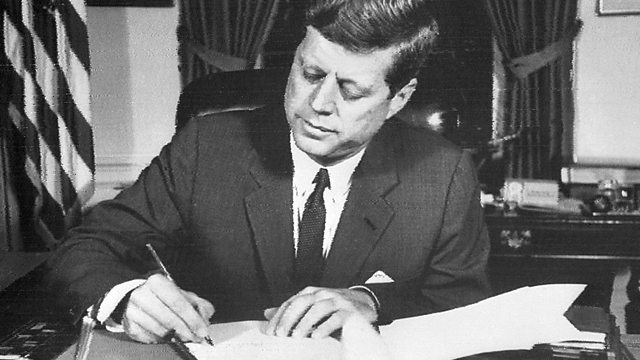Nuclear destruction
Serhii Plokhy, Patricia Lewis and Sarah Rainsford discuss nuclear arms diplomacy and the Cuban Missile Crisis with Amol Rajan.
In 1962 the world teetered on the edge of nuclear destruction as the Presidents of the USA and the Soviet Union fought over Soviet warheads installed on the islands of Cuba. In Nuclear Folly: A New History of the Cuban Missile Crisis, the historian Serhii Plokhy retells the tortuous decision-making and calculated brinkmanship of John F Kennedy, Nikita Khrushchev and Fidel Castro. He tells Amol Rajan it was ultimately fear that saved the planet, and it’s time to draw lessons from the many mistakes that were made at the time.
The Cold War era did produce a nuclear arms-control agreement – the Intermediate-Range Nuclear Forces Treaty – signed in 1987. But the nuclear physicist and former director of the UN Institute for Disarmament Research Patricia Lewis says that in 2019 the United States and Russia withdrew their support. Lewis, who now leads the International Security programme at Chatham House, asks whether we are now entering a second nuclear age.
The Βι¶ΉΤΌΕΔ journalist Sarah Rainsford visited the sites of the Soviet Union's nuclear stations in Cuba when she was posted there in 2011. She wrote about her experiences and the end of the Castro era in Our Woman in Havana. Rainsford is now the Βι¶ΉΤΌΕΔ’s Moscow correspondent and explores how far Khrushchev’s political scheming and disinformation compare to the strategy of President Putin.
Producer: Katy Hickman
Last on
More episodes
Broadcasts
- Mon 12 Apr 2021 09:00Βι¶ΉΤΌΕΔ Radio 4
- Mon 12 Apr 2021 21:30Βι¶ΉΤΌΕΔ Radio 4
Podcast
-
![]()
Start the Week
Weekly discussion programme, setting the cultural agenda every Monday


